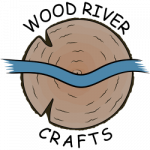Curious on some of our product details?
Typically are on the Charcuterie Boards. The edges are customized to give the effect of the unique curves of a live edge board.
cutting board is made from parallel pieces of wood that have been fused together and is the “side” of the board. It’s usually the side that woodworkers measure the “thickness” of a board. Edge grain cutting boards are recognized for their durability and lower price.
Cutting Board the grain of wood seen when it is cut across the growth rings. An end grain chopping board is made by cutting up a slab of lumber into smaller blocks and gluing the blocks back together, such that the end grain of the blocks forms the board’s working surface.
When cutting on an end grain board, your knife stays sharper because you are slicing in between the wood’s fibers. And end grain cutting boards are somewhat “self-repairing” because those wood fibers bounce back into place after chopping
is when individual pieces of wood are glued together. This is a common technique in woodworking, as it allows for the creation of large pieces of wood from smaller pieces. The glue-up process involves clamping the pieces of wood together and allowing the glue to dry.
are routed into the ends of each board which provides an open clean surface for displaying your assortment of cheeses and meats. Also are available on the cutting boards that don’t have a juice groove.
refers to the natural edge left on at least one side of a piece of wood. Rather than the sharp, clean lines in more traditional wooden furniture, live edge retains the natural beauty of the tree. Live edge slabs keep the natural edge of the wood, making each piece uniquely shaped. This provides a gorgeous rustic look.
is going in the direction of the longest direction.
Both sides of the boards are finished and can be used.
Both sides of the boards are finished and can be used. A juice Groove can be provided on one side.
means the grain is going in the direction of the shortest direction.
